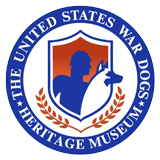As the desert air cooled and night fell, Staff Sgt. John Mariana looked down into the reassuring eyes of one of the most valuable comrades of his eight-month deployment to Afghanistan: Bronco, his military working dog.
Sgt. Mariana and Bronco were leading a U.S. patrol in June 2011, searching for roadside bombs. Bronco kept his head low, sniffing for buried explosives. Suddenly, ahead in the dark, Sgt. Mariana saw a man just 10 feet away, pointing an AK-47 at them. Sgt. Mariana shouted, and Bronco bolted toward the attacker, biting down hard. Then a shot rang out, and Sgt. Mariana saw the impact as a bullet hit his dog.
Bronco survived, as Sgt. Mariana told me a year later—and joined a long line of canine heroes. For centuries, dogs have been saving soldiers’ lives on battlefields. The ancient Egyptians used dogs to carry messages, the Corinthians surrounded their seashore citadel with guard dogs, and the Romans used dogs to raise alarms for their garrisons.
Dogs began appearing on U.S. battlefields during the Revolutionary War, though often as pets and mascots. During the Civil War, according to an 1862 article in Harper’s Weekly, a dog named Union Jack ran toward a spray of shells, barking as if he were chasing down the Confederate artillery.






